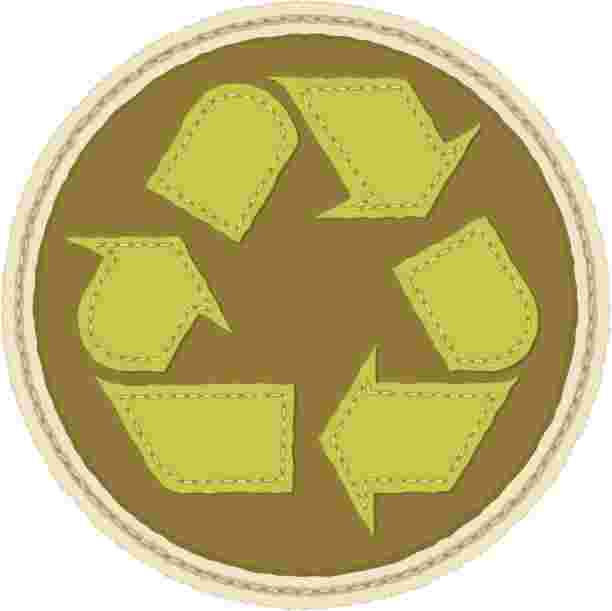Textile Recycling: Fashion with Purpose

Textile Recycling: Fashion with Purpose
In today’s throwaway culture, textile recycling offers a meaningful way to give our clothes a second life—and our planet a second chance. Millions of tons of clothing and fabric are discarded every year, many of which could be recycled, reused, or repurposed into something new. As sustainability takes center stage, it’s time to rethink how we consume and dispose of textiles.
Whether you’re a conscious consumer or a business ready to take responsibility, textile recycling is a powerful step toward purposeful fashion.
The Fashion Industry’s Waste Crisis
The fashion industry produces tremendous waste:
-
92 million tons of textile waste are generated each year globally
-
Less than 15% of discarded textiles are recycled
-
Most textiles in landfills are synthetic, taking centuries to decompose
-
Overproduction and fast fashion encourage disposable consumer habits
These numbers reveal the urgent need for sustainable alternatives—and textile recycling is one of the most effective solutions.
What Is Textile Recycling?
Textile recycling is the process of collecting, sorting, and reprocessing used fabrics and garments into new materials. It keeps clothing out of landfills and reduces the environmental burden caused by producing new textiles from raw materials.
There are three main pathways:
-
Reuse – Reselling or donating usable garments
-
Mechanical Recycling – Shredding and respinning fibers into new textiles
-
Chemical Recycling – Breaking down synthetic fibers for remanufacturing
Even damaged or stained items can often be repurposed for industrial use or transformed into entirely new products.
Common Items You Can Recycle
Many people are surprised by what can be recycled. Examples include:
-
Worn-out clothes
-
Shoes and bags
-
Towels and linens
-
Curtains and upholstery
-
Fabric scraps and manufacturing offcuts
As long as they’re clean and dry, most textiles can find a new life—even if they’re no longer wearable.
Benefits of Textile Recycling
Recycling textiles goes far beyond reducing waste. It creates a chain of positive environmental, social, and economic impacts.
| Benefit | Description |
|---|---|
| Waste Reduction | Keeps fabrics out of landfills and incinerators |
| Resource Conservation | Saves water, energy, and raw materials |
| Emission Reduction | Cuts carbon footprint of textile production |
| Job Creation | Supports employment in the circular economy |
| Supports Circular Fashion | Promotes reuse, resale, and sustainable design |
How to Get Involved
For Individuals:
-
Donate clothes to local collection points
-
Repair and reuse old garments instead of throwing them out
-
Choose quality over quantity when shopping
-
Support secondhand and recycled fashion brands
-
Use textile recycling bins provided by services like Green City Recycle
For Businesses:
-
Launch textile take-back programs
-
Partner with Green City Recycle for reliable collection and processing
-
Incorporate recycled materials into your supply chain
-
Educate your customers and staff about textile recycling
-
Measure and share your environmental impact
Challenges in Textile Recycling
While the process is impactful, it’s not without obstacles:
-
Mixed-fiber clothing is harder to recycle than single-fiber items
-
Lack of public awareness leads to low participation
-
Recycling infrastructure is still developing in some areas
-
Contaminated textiles (wet, moldy, or oily) can’t be processed
But with growing demand and innovation, these challenges are being met with smarter systems and better technologies.
Innovation is Changing the Game
Textile recycling is becoming more efficient thanks to new advancements:
-
AI-powered sorting to identify fiber types quickly
-
Chemical recycling of blended or synthetic fabrics
-
Blockchain tracking of recycled material in fashion supply chains
-
Biodegradable fibers designed to be easier to recycle or compost
These breakthroughs are pushing the industry toward a fully circular fashion system.
Conclusion
Clothing is more than just a personal statement—it’s a responsibility. By embracing textile recycling, we not only reduce waste but also challenge the unsustainable norms of fast fashion. It's a practical, impactful way to contribute to a cleaner environment and a smarter fashion industry.
At Green City Recycle, we make it easy for individuals and businesses to recycle their textiles responsibly. Whether you're cleaning out your closet or building a corporate sustainability initiative, we’re here to support your journey toward a waste-free future.
Let’s turn old clothes into new beginnings—together.
- Art
- Causes
- Crafts
- Dance
- Drinks
- Film
- Fitness
- Food
- Spiele
- Gardening
- Health
- Startseite
- Literature
- Music
- Networking
- Andere
- Party
- Religion
- Shopping
- Sports
- Theater
- Wellness



